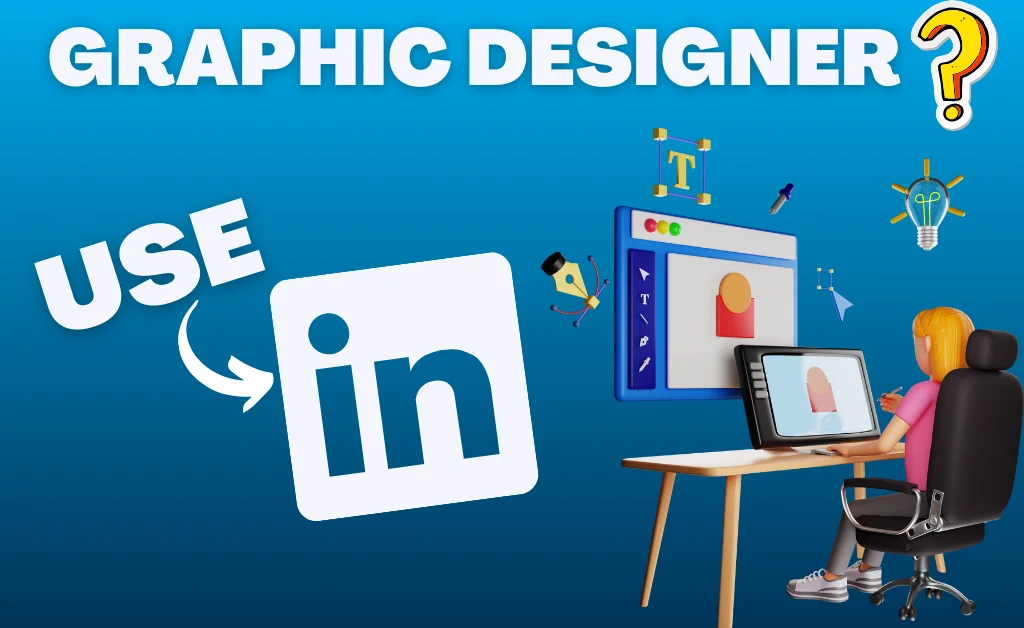Step-by-Step Guide: How to Start Freelancing for Beginners
The year 2024 can be life-changing for you if you start your freelancing journey this year. Freelancing gives you the freedom to work on your own terms, choose your own clients, set your own rates, and be your own boss.
I started freelancing 3 years ago, in 2021, when the COVID pandemic hit us all hard. I needed more special skills but knew I had to try something new. It took me about 1.5 years to really understand the freelancing business and establish myself. Once I got the momentum, there was no looking back.
In this comprehensive guide, I will provide a step-by-step: The Complete Guide How to start freelancing for beginners in 2024. Whether you want to freelance full-time or part-time to supplement your income, this guide will be handy.
Let’s get started!
Skills Needed for Freelancing
The first and foremost requirement to start freelancing is identifying your skills. Freelancing means providing services to clients in exchange for a fee. So, you must have particular skills clients are willing to pay for.
Here are the top 10 in-demand freelancing skills in 2024 that you should consider:
1. Digital Marketing
Digital marketing is one of the evergreen skills that will continue to be in huge demand in 2024 and beyond.
Every business needs digital marketing services such as search engine optimization, social media marketing, pay-per-click, content marketing, email marketing, etc.
If you enjoy marketing and have an analytical mind, digital marketing can be very rewarding.
2. Graphic Design
From creating logos and branding material to marketing content and advertisements, graphic design is integral for companies, big and small.
Graphic designers will continue to thrive as businesses expand their digital presence.
Tools like Canva have also increased the demand for graphic design work.
3. UI/UX Design
UI (user interface) and UX (user experience) design skills are much sought after nowadays, as every website and mobile app needs a seamless user experience.
The increased use of smartphones and apps has led to huge demand for qualified UI/UX designers.
4. Web Development
Building websites and web applications requires web development skills like HTML, CSS, JavaScript, WordPress, Shopify, Wix, etc.
With the internet economy booming, web developers are extremely high in demand for freelancing work.
5. Cyber Security
As digital threats continue to increase globally, cybersecurity experts who can provide various security solutions are much needed.
Companies are willing to pay top dollar to cyber security consultants to protect their data and systems.
6. Video Editing
Video content is all the rage these days. From social media apps like Instagram and YouTube to businesses marketing their products online, everyone needs video editing services.
This can be a great freelancing option if you enjoy video production and editing.
7. Content Writing
Good writing skills are always valued. Brands need blog posts, articles, product descriptions, website content, social media posts, and more.
Demand for freelance writers and content creators continues to grow steadily.
8. Copywriting
Copywriting is a specialized writing skill focused on sales and conversions.
Copywriters are hired to write persuasive sales pages, landing pages, emails, ad copies, sales letters, product packaging, etc. This needs creativity and wordplay.
9. Project Management
Project management coordinates complex projects with multiple tasks, resources, budgets, and timelines.
Companies often hire freelance project managers to oversee key initiatives and ensure execution. This will be even more in demand in 2024.
10. Data Entry and Analysis
Data skills are valuable for many industries today. If you are good with tools like Excel, companies may hire you for data entry, mining, analytics, visualization, reporting, and more.
Choosing a Niche
Once you have identified your skill area, the next step is to choose a profitable freelancing niche within that skill. Going niche helps you stand out, command higher rates, attract ideal clients, and be viewed as an authority.
For instance, as a graphic designer, instead of general graphic design, you can niche down to book covers, restaurant menus, social media posts, letterheads, poster design, etc.
Or, as a web developer, you can focus solely on developing sites for law firms, stores, universities, or tech companies. Define your niche carefully based on your skill strengths and profitability.
Building an Online Presence
In 2024, freelancers need to have a strong online presence. This is how you will be discovered by potential clients and be viewed as an authority in your niche.
Here are some effective ways to build your online freelancing presence:
1. Create a Profile on Freelancing Platforms
Join leading freelancing platforms like Fiverr, Upwork, and Freelancer to access their large client base.
Create an attractive freelancer profile highlighting your skills, experience, portfolio, and reviews. Bid for projects that match your expertise.
These platforms bring a lot of freelancing job opportunities.
2. Network on LinkedIn
LinkedIn is used extensively by businesses and professionals to find freelancers.
Build an optimized LinkedIn profile clearly stating your service offerings. Also, network with your target clients by connecting with them.
Engage by commenting on their posts and start conversations to build relationships.
3. Post Valuable Content on Social Media
Promote your work on platforms like Twitter, Facebook, Instagram, etc. Share samples, tips, behind-the-scenes projects, advice, etc., to provide value to your audience.
Post consistently and interact. This will establish you as an industry expert.
In essence, actively promote your skills online through profiles, posts, and networking to attract more clients.
Importance of Target Audience
As a freelancer, it is crucial to identify your ideal client type, a.k.a. your target audience. This helps streamline your efforts to get clients.
For example, if you offer video editing for beauty and makeup tutorials, your audience would be beauty bloggers, YouTubers, Instagram influencers, etc.
Similarly, identify who can use your services and directly target them through your messaging online.
Networking for Clients
Networking plays a big role in getting freelance clients. Potential clients are more likely to hire people they know, like and trust.
Here are some networking best practices:
- Attend in-person networking events and industry conferences whenever possible. Exchange business cards and connect with attendees who may need your services.
- Actively network online through LinkedIn, Twitter, and other social media accounts. Engage with your target audience and build relationships.
- Connect with fellow freelancers in your field through online groups and communities. Exchange leads, share advice, and collaborate if possible.
- Ask existing happy clients to refer you to others in their network who may need your services. Referrals can be a great lead source.
Use networking platforms to connect directly with high-potential prospects, share your work, and build lasting relationships.
Building a Strong Portfolio
Your portfolio showcases actual work samples and demonstrates your skills in action. It is one of the most powerful tools for getting high-paying clients.
Invest time in creating a compelling freelancing portfolio that becomes your verified work profile.
Here are some portfolio-building tips:
- Collect 8-10 strong samples of your absolute best work rather than everything you have done
- Showcase diversity by including different types of relevant projects
- Organize your work neatly into sections and use clear labels/descriptions
- Highlight the key objectives, processes, and results for each sample
- Include client testimonials and feedback if possible
- Customize portfolios for each service you offer
- Link to online work samples such as websites to showcase capabilities
Your portfolio should clearly communicate your skills, experience, and work quality to prospective clients.
How to Get your First Freelance Client
Armed with your skills, online presence, target audience, and portfolio, you can pitch actively to get clients.
Here are proven ways to land your first freelance clients:
1. Cold Emailing
- Email those clients who can use your services and benefit from your expertise.
- Send personalized emails highlighting their needs and how you can help.
- Include a link to your portfolio.
- Email relentlessly till you get responses.
2. Social Media Outreach
- Identify prospects on social media platforms through hashtags, groups, etc., and send them messages pitching your services.
- Be relevant and share how working with you can solve their problems.
3. Job Sites
- Register on popular freelancing job sites and apply to gigs that match your skills and experience.
- Follow up promptly with clients if they contact you.
4. Attend Events
- Look for events, conferences, and networking meetups your target clients attend.
- Pitch face-to-face with them and make them aware of your work.
- Collect business cards for further follow-up.
5. Run Campaigns
- Offer free consultations, discounts, or other incentives to get new clients initially.
- You can run limited-period campaigns through social media and email outreach.
6. Ask for Referrals
- Request existing happy clients to refer you to others in their network who may have similar needs.
- Referrals can hugely help get clients faster.
It takes consistent and concerted efforts across multiple channels to acquire long-term clients. But once you build authority and trust, landing clients gets much easier through repeat business and word-of-mouth.
Pricing Your Services
One of the trickiest aspects of freelancing for beginners is deciding how much to charge for their services.
Here are some guidelines on pricing strategies:
Know your worth: Research the price range charged by other freelancers offering similar services at your skill level and experience in the industry. Price competitively based on the market.
Factor in direct and indirect costs: Include your time, equipment, software, travel, and other operational expenses. Price so that your overall income exceeds expenses comfortably.
Bundle offerings: Bundle basic and premium services as packages. Clients can pick plans based on individual needs and budgets. Allows upselling opportunities.
Offer tiered pricing: Provide multiple tiers, such as basic, standard, and premium, for each service based on deliverables, effort, and client preferences. Attracts clients across price points.
Retain ownership of work: Remain ownership to reuse work samples unless the client specifically pays for source files and intellectual property rights. This saves future effort.
Initially, focus more on building clientele through competitive pricing and great work instead of maximizing profits. Deliver real value and increase rates for future projects once you establish yourself.
Staying Relevant in 2024
While the demand for freelancers grows exponentially yearly, you must evolve your offerings to align with 2024 opportunities to beat the competition.
Here are some areas to focus on for the year ahead:
1. Enhance Digital Skills
Sharpen skills in digital domains like analytics, marketing technology, cyber security, AI/ML, IoT, etc. Digital capabilities give an edge across all fields today.
2. Get Future Ready
Constantly update your knowledge with your sector’s evolving tools, technologies, and workflows. Alignment with the latest trends is crucial for freelancers.
3. Learn Adjacent Skills
Keep expanding the scope of services you offer by gaining expertise in related additional areas and skills. This makes you more versatile in changing client requirements.
4. Specialize Further
Become outstanding at a specific function within your broader skill rather than average at multiple things. For example, highly specialized content writers can charge much higher.
5. Nurture Existing Clients
Aim to delight your current clients with great work and service. Leverage repeat clients rather than constantly chasing new ones.
By proactively anticipating and meeting client needs in 2024, you can build a successful freelancing career for long-term growth.
Wrapping Up
This step-by-step comprehensive How to Become a Freelancer guide covers everything a beginner needs to start their independent work journey in 2024.
Follow the step-by-step roadmap outlined above on skills identification, online presence building, target audience research, networking, portfolio creation, and client acquisition. Consistent discipline across all fronts will slowly but surely lead to a thriving freelance practice.
If you stay adaptable and committed to providing real value as a freelancer, opportunities will only expand in 2024 across diverse sectors.
I wish you abundant success as you join the flourishing community of skilled independent professionals pursuing their work passions on their own terms. Believe in your skills and put these tips into diligent execution. You will soon be a leading name in your chosen freelancing field!




